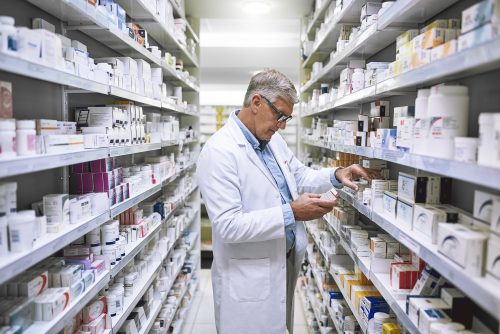
According to estimates from the National Cancer Institute, cancer treatment costs will increase from $124 billion in 2010 to $206 billion by 2020, taking into account a rise in cancer diagnoses and incurred costs per patient throughout each phase of care. The increase is multifaceted. The past few years have not only seen numerous new drug approvals and expanded indications for drugs already on the market, but U.S. Pharmacopeia (USP) Chapter 800 may drive up maintenance costs for hazardous drug facilities.
These rising costs put pressure on pharmacy managers to develop an oncology drug budget. Traditional cost-saving avenues may not be helpful in the oncologic setting because with the introduction of new drugs, treatment choice is often specific to biomarkers and disease pathology.
New biologics and antineoplastic agents can be stratified into one of three budgetary categories: low-, moderate-, or high-impact. Drug costs may be controlled or uncontrolled. Moderate- and high-impact drugs have uncontrolled costs because tumor pathology dictates which medications are used. Bisphosphates and antiemetics—low-impact treatments—tend to come with controlled costs, which normally apply to medications that manage symptoms. Low-impact costs can often be managed with familiar budgeting strategies like therapeutic interchanges, preferred agent choices, and contract negotiations with drug wholesalers.
By separating the oncology drug budget from the traditional inpatient pharmacy, pharmacy managers can monitor internal health-system factors that may adversely impact the pharmacy’s financial performance. Gross revenue, supply costs, and salary costs should be kept separate for these two budgets. The pharmacy’s head of budgeting should also make sure that charges for new drugs are proportional to the cost to ensure that the patient is not charged a price lower than the drug cost. Order set and drug build disorganization, difficulty in system communication, the billing of drug waste, and human error (such as nonpharmacy workers manipulating claims) may all result in revenue mistakes.
Financial performance could be greatly improved with strategic planning. One strategy to evaluate long- and short-term trends is to separate the oncology drugs from standard drugs and stratify the oncology drugs into their own subsets, such as therapeutic class. An oncology pharmacy differs greatly from a traditional inpatient hospital pharmacy, meaning that a finance department’s budget projections may not be inclusive of new drugs and shifts in prescribing.
One idea for creating a budget model is keeping a monthly oncology drug inventory, which can provide a picture of a drug’s actual cost each calendar month. This also allows for comparison of month-to-month totals. If the current month has a lower inventory than the previous, the difference is added to the drug spending; if the inventory is more, the difference is subtracted. To create a financial ratio, divide the total drug expense by the total drug revenue; this ratio can also be compare monthly costs.
The following steps will help to create a model of drug gross revenue and drug cost:
- In an established oncology infusion area, calculate the quarterly total by adding the previous three months’ revenue and expenses
- Divide the quarterly totals by the number of business days for the quarter to come up with the average daily gross revenue and average daily drug expense
- Annualize the average daily revenue and average daily drug expense based off on the next year’s total business days
- Discuss the anticipated percent change in the cancer program’s growth with the finance department
- Adjust the projected numbers for the year by factoring in the predicted changes in revenue and volume adjustment; here, it may be beneficial to add 1% or 2% to the annualized drug cost projections to account for new drugs’ costs and/or expanded indications
- Calculate the gross revenue and drug cost by month based on the number of business days in each month
- Forecast drug spending and revenue throughout the year by using the calculated ratio
Another factor to consider is the upcoming implementation of USP <800>, which may come with additional expenses, such as costs for the monitoring of buffer areas and anterooms. USP <797> certification for buffer area and anteroom costs will reach, on average, $2,500, with another $2,000 required for the viable testing, which is required every six months. Outdated compounding spaces may also drive up maintenance costs.
Despite changes in the oncologic market, pharmacy leaders can attain financial success by with advanced planning.
Source: HOPA News







 © 2025 Mashup Media, LLC, a Formedics Property. All Rights Reserved.
© 2025 Mashup Media, LLC, a Formedics Property. All Rights Reserved.